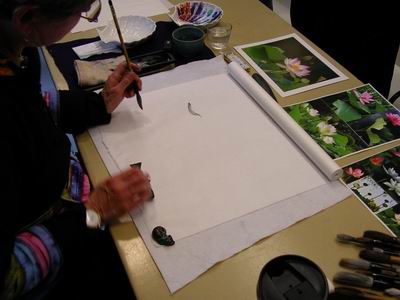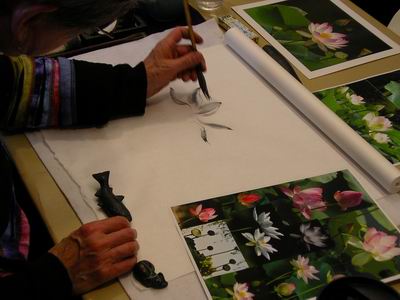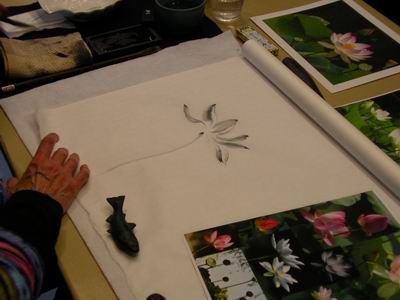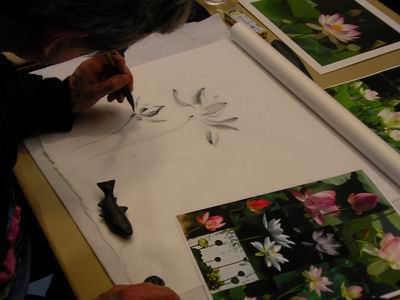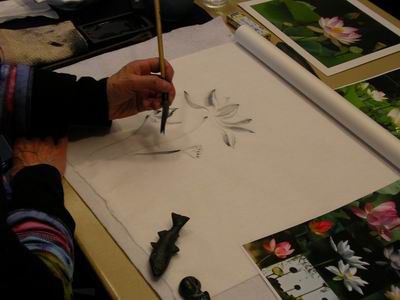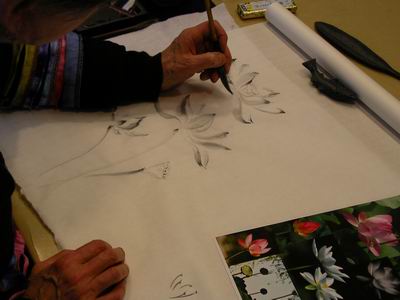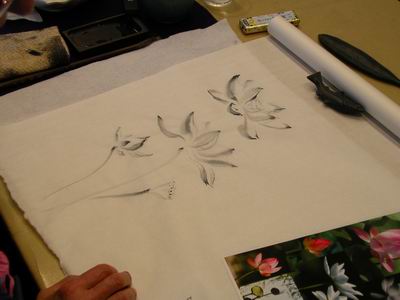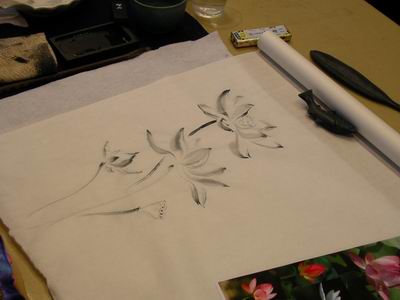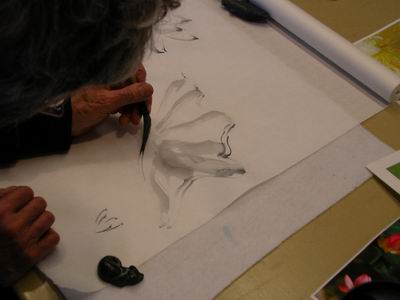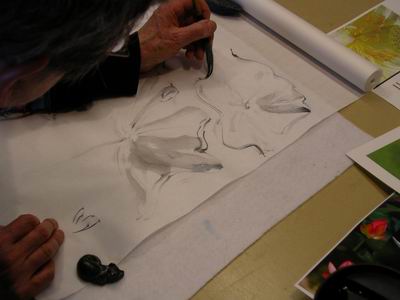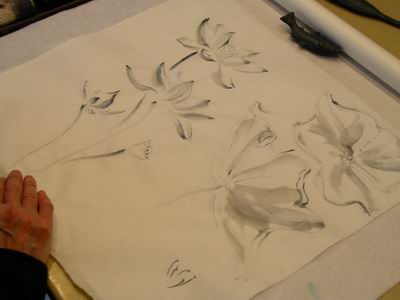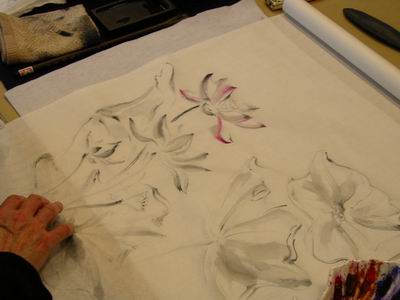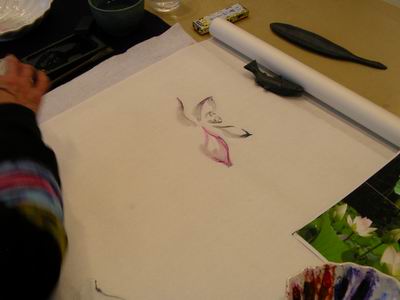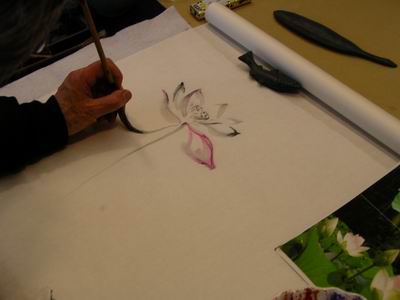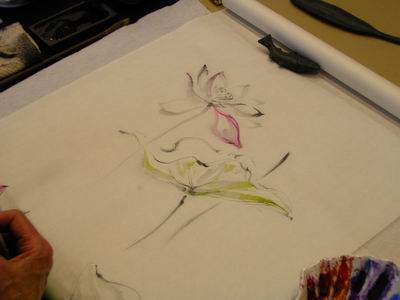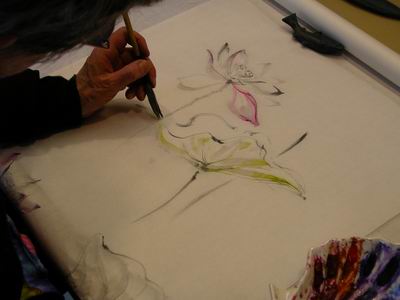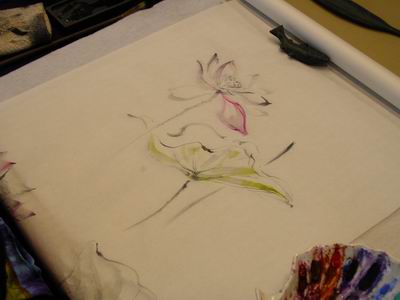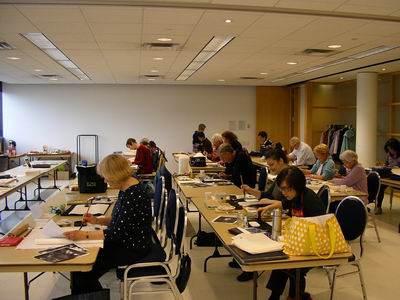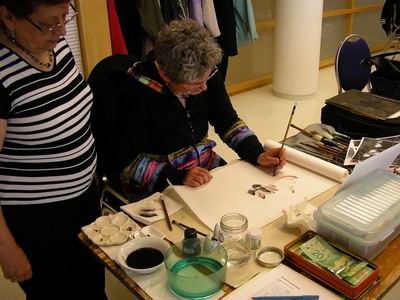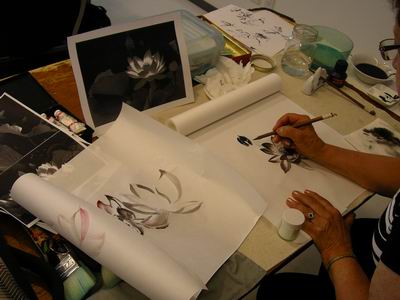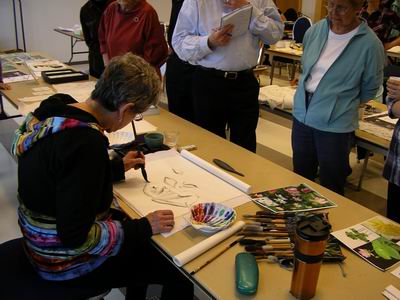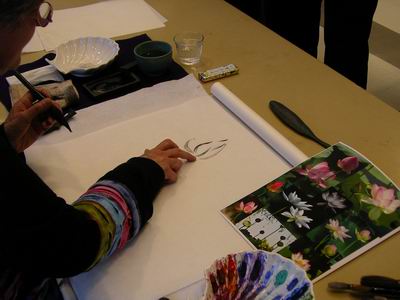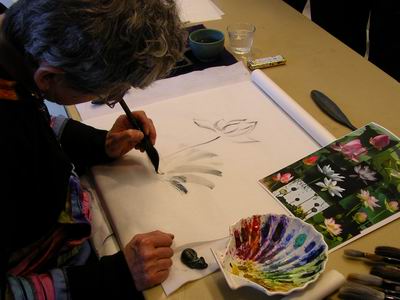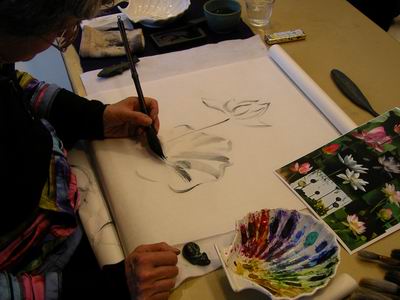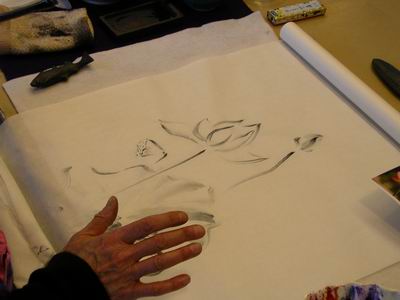Lotus with Roslyn Levin - May 13th, 2017
The lotus flower makes a classic painting in Japanese sumi-e painting. Delicate and beautiful, it is a challenge to paint yet remains a favourite flower for artists. The lotus is found throughout the world in many colours. The lotus is also a symbol of purity and enlightenment. Roslyn Levin began her workshop by creating a petal with a single continuous brush stroke.
Roslyn Levin used this brush stroke throughout her painting, starting with the brush in motion, touching the paper, and then lifting the brush. Roslyn Levin breathes in as she contemplates the the brush stroke and breathes out when putting the brush to the paper.
The stem is created with a single, steady stroke. Note that where the stem and petals meet, there is no ink. This central point of the lotus is left empty, as Roslyn Levin reminded the artists at the workshop.
A second lotus was added that was just opening. Although similar, the petals are darker and more upright. Roslyn Levin used an almost dry brush to paint this lotus and the previous lotus.
Like other flowers, the lotus has stamens with pollen that gets added to insects visiting the lotus. Roslyn Levin demonstrated the circular framework with stamens that appear as bumps.
Then one more larger lotus was added with the stamens inside the lotus flower.
The composition of lotuses using only sumi-e ink was almost complete.
Roslyn Levin added a stem for the top most lotus. Note that this stem starts at the top, then is hidden by the central lotus, and then continues beneath the central lotus. Roslyn Levin says that creating the lotus flowers first and then adding the stems gives the artist more flexibility over creating the stems first.
The leaf is painted using the side of a large brush in a few sweeping strokes.
Then add the edge of the leaf.
The painting was complete using sumi-e ink.
However, colour can be added by highlighting the edges of the petals.
Roslyn Levin also showed how to load a brush with both colour and sumi-e ink, and then paint a petal.
This next painting was created in a similar manner as the previous one with petals and a stem.
The leaf used green ink.
Roslyn Levin extended a stem to develop the painting further.
The completed work with color indicates why the lotus remains a favourite subject for artists.
Our turn at painting the lotus came next.
However, Roslyn Levin provided us with some tips on the lotus.
One advantage of practicing the lotus is that what you learn can be transferred to most other flowers.
Roslyn Levin returned to remind us of a few points when painting the lotus.
Remember to leave the central point where the petals meet empty.
Make your leaves in big, broad sweeping strokes.
Add the edge of the leaf afterward.
This painting contained the elements needed for an effective lotus composition such as a main flower, a budding flower, and a leaf.
You can learn more about Roslyn Levin in the links section.
